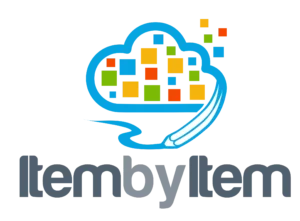The Problem: Training Is Built for Consultants, Not Users
Most corporate training programs focus on consultants, administrators, and configuration specialists. They dive deep into system settings, workflows, and customization options—but leave actual end users struggling. The people who need to use the software every day get an afterthought: rushed training sessions, thick manuals, and little hands-on experience.
This is a major flaw in how companies approach training. End users are the ones who will make or break the success of any new tool or process. If they don’t understand how to use it efficiently, adoption suffers, mistakes increase, and productivity declines.
Why Traditional Training Doesn’t Work for End Users
1. End Users Don’t Have Time for Lengthy Training Sessions
Unlike consultants and IT professionals who expect to spend hours in workshops, end users are busy doing their actual jobs. They don’t have the time—or the patience—for multi-hour training sessions filled with irrelevant details.
2. Adults Learn in Small, Actionable Chunks
Most training is designed like a college course—long sessions packed with information. But research in adult learning shows that people learn best when they receive information in small, digestible chunks. Micro-learning, where training is delivered in short, focused segments, is much more effective.
3. They Need Hands-On Practice, Not Just Theory
Watching a demo or reading a manual is not the same as doing the work. End users learn best when they can immediately apply new skills in a hands-on environment. Without real-world practice, they will quickly forget what they learned.
4. One-Time Training Leads to Forgetting
Most companies train users once—during implementation or go-live—and expect them to remember everything. This doesn’t work. The Forgetting Curve shows that without reinforcement, people lose most of what they learn within days or weeks. Training needs to be continuous and available on-demand for when users need it.
How to Build a Training Program That Works for End Users
1. Make Training On-Demand
End users don’t need to be experts—they just need the right answers at the right time. Instead of long, scheduled sessions, offer training in bite-sized, on-demand formats that they can access whenever they need it. This could include:
- Short video tutorials
- Step-by-step guides
- Interactive walkthroughs within the software
2. Focus on Micro-Learning
Break training into small, relevant lessons that users can complete in just a few minutes. Instead of a one-hour session on a system’s features, offer five-minute lessons on specific tasks like “How to Submit an Invoice” or “How to Approve a Request.”
3. Provide Hands-On Learning
The best way to learn is by doing. Use interactive simulations, guided exercises, and real-world scenarios to help users build confidence. Give them a sandbox environment where they can practice safely before using the actual system.
4. Reinforce Learning Over Time
Instead of one-time training, build reinforcement into the process. Use:
- Automated reminders with quick tips
- Follow-up quizzes to test retention
- Just-in-time training that appears when users need help
5. Make It Easy to Find Answers
Users don’t want to dig through PDFs or sit through a 45-minute video to find a simple answer. Design a searchable knowledge base with clear, concise answers to common questions. Use tooltips, embedded help, and AI-driven chatbots to provide instant support.
Conclusion: Training Built for Users, Not Just Experts
If your training program is focused on consultants and technical users, you’re missing the most important audience—end users. They need short, relevant, and hands-on training that fits into their workflow. By shifting to an on-demand, micro-learning approach with hands-on practice, companies can ensure their employees actually use and benefit from the tools they’re given.
Investing in user-focused training isn’t just good practice—it’s the key to successful adoption and long-term efficiency.




